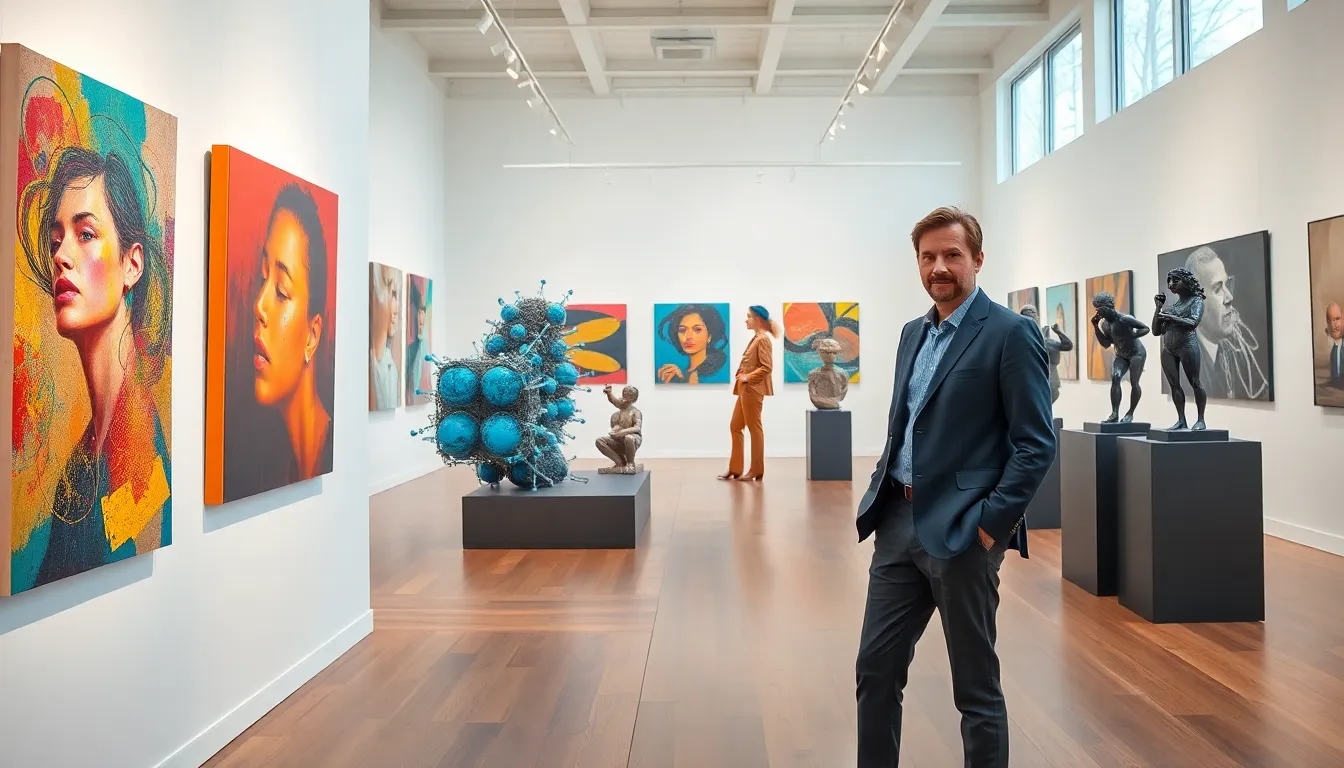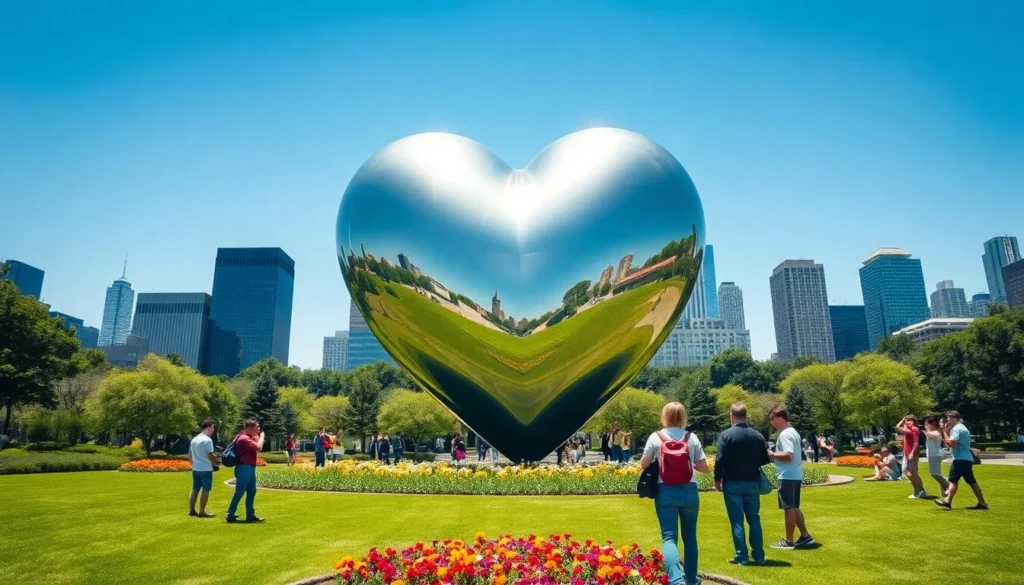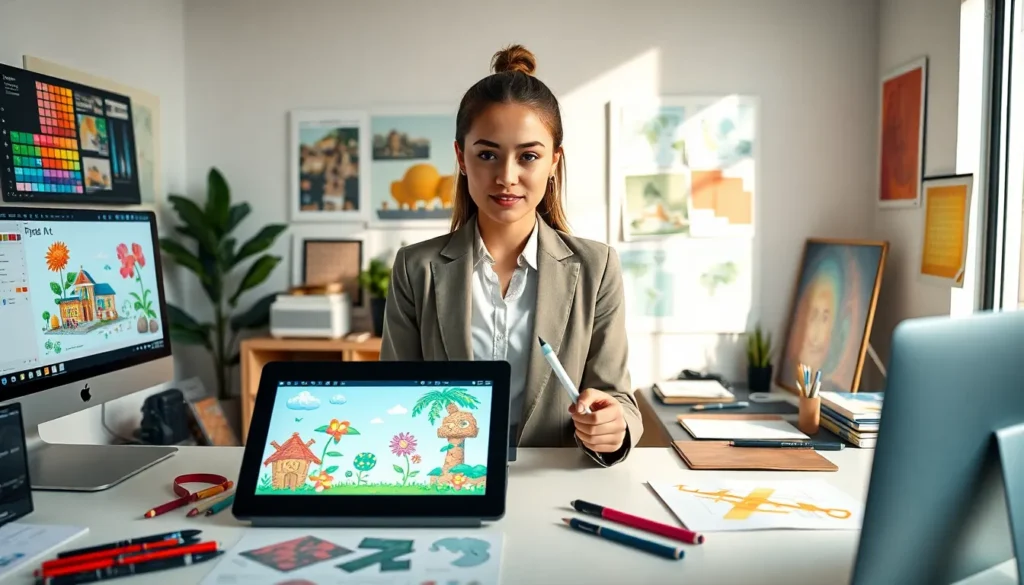Table of Contents
ToggleContemporary art: a term that might evoke images of splattered paint, giant inflatable animals, or thought-provoking installations. But beyond the initial shock and awe lies a dynamic world of creativity that captures the essence of our times. Why should you care? Because understanding contemporary art is like unlocking a mischievous secret that reveals deeper insights into society, culture, and human experience. In this guide, we’ll explore the fascinating characteristics of contemporary art that make it truly one-of-a-kind, ensuring that your next visit to an art gallery leaves you enlightened and maybe even a bit entertained.
Definition of Contemporary Art

Contemporary art refers to artworks created in the latter half of the 20th century and into the 21st century. Unlike traditional art forms, which often adhere to specific styles and techniques, contemporary art breaks boundaries, embracing a wide array of styles and methods. It reflects the dynamic and multifaceted nature of modern society, responding to current events and issues. This art form is not just found in galleries: it permeates daily life, making intriguing statements about culture and identity. It’s an ever-evolving narrative that speaks to the zeitgeist of the present, making it especially relevant for today’s viewers.
Key Characteristics of Contemporary Art
Diverse Mediums and Techniques
In contemporary art, the sky’s the limit. Artists are no longer confined to canvases and sculptures: they explore a vast range of technical and stylistic approaches. Painting, sculpture, installations, video art, and performance art create a rich tapestry of expression. This diversity allows artists to challenge norms and create works that resonate with a broader audience. Instead of sticking to traditional forms, today’s artists often blend different mediums, leading to innovative creations that excite and provoke thought.
Interdisciplinary Approaches
Contemporary art often draws from various disciplines, be it philosophy, sociology, or science, creating a cross-pollination of ideas. Artists not only use traditional techniques but also incorporate elements of film, literature, and even architecture into their work. This interdisciplinary approach encourages fresh perspectives and an exploration of new ideas. So, art becomes a forum for dialogue, pushing boundaries in ways that traditional forms simply cannot.
Themes and Subject Matter
Social Commentary and Activism
Art today is a powerful tool for social change. Many contemporary artists use their work as a platform for activism, addressing pressing social issues such as climate change, inequality, and human rights. Their artwork provokes conversations, encouraging viewers to reflect on societal problems. These pieces are often infused with intense emotion, demanding attention and action rather than passive observation. They remind us that art can catalyze dialogue and inspire change.
Globalization and Cultural Exchange
In an increasingly interconnected world, contemporary art acts as a mirror, reflecting the complexities of globalization. Artists draw influence from diverse cultures, blending local traditions with global themes. This cross-cultural exchange enriches the art world, making it a melting pot of ideas and perspectives. The result? Art that speaks to a global audience, inviting viewers to engage with different cultures and histories in ways that resonate on a personal level.
The Role of Technology in Contemporary Art
Virtual and Augmented Reality
The tech boom has had a profound impact on contemporary art, particularly with the rise of virtual and augmented reality. Artists use these technologies to create immersive experiences that transport viewers into entirely new realms. Imagine stepping inside a painting or interacting with three-dimensional sculptures: these technologies revolutionize how art is perceived and experienced. Also, they challenge the traditional idea of artwork as a static object, offering dynamic experiences that can shift and evolve based on audience interaction.
Digital Art and NFTs
Digital art has surged in popularity, further blurring the lines between art and technology. It ranges from graphic design to complex digital installations. The rise of Non-Fungible Tokens (NFTs) has opened new avenues for artists to monetize their work in the digital landscape. By owning an NFT, collectors gain unique ownership of digital pieces, allowing them to support artists while engaging in the evolving art market. This intersection of creativity and innovation cements digital art’s place in contemporary culture.
Engagement and Interaction with Audience
Site-Specific and Participatory Art
Contemporary artists often create site-specific installations, transforming public spaces into interactive environments. These works invite passersby to engage with the art, fostering a sense of community and shared experience. Participatory art takes this further by encouraging viewer involvement in the creation process. This interaction establishes a unique relationship between the artist and the audience, making each experience distinct and personalized.
The Impact of Art in Public Spaces
Art in public spaces challenges the conventional gallery setting, bringing creativity into everyday life. Murals, sculptures, and installations in parks and urban areas provoke new dialogues, making art accessible to all. These installations contribute to the cultural fabric of a community, often reflecting local identity or sparking conversation on relevant issues. By integrating art into public spaces, artists can influence and inspire a diverse audience, crafting narratives that resonate beyond the gallery walls.




